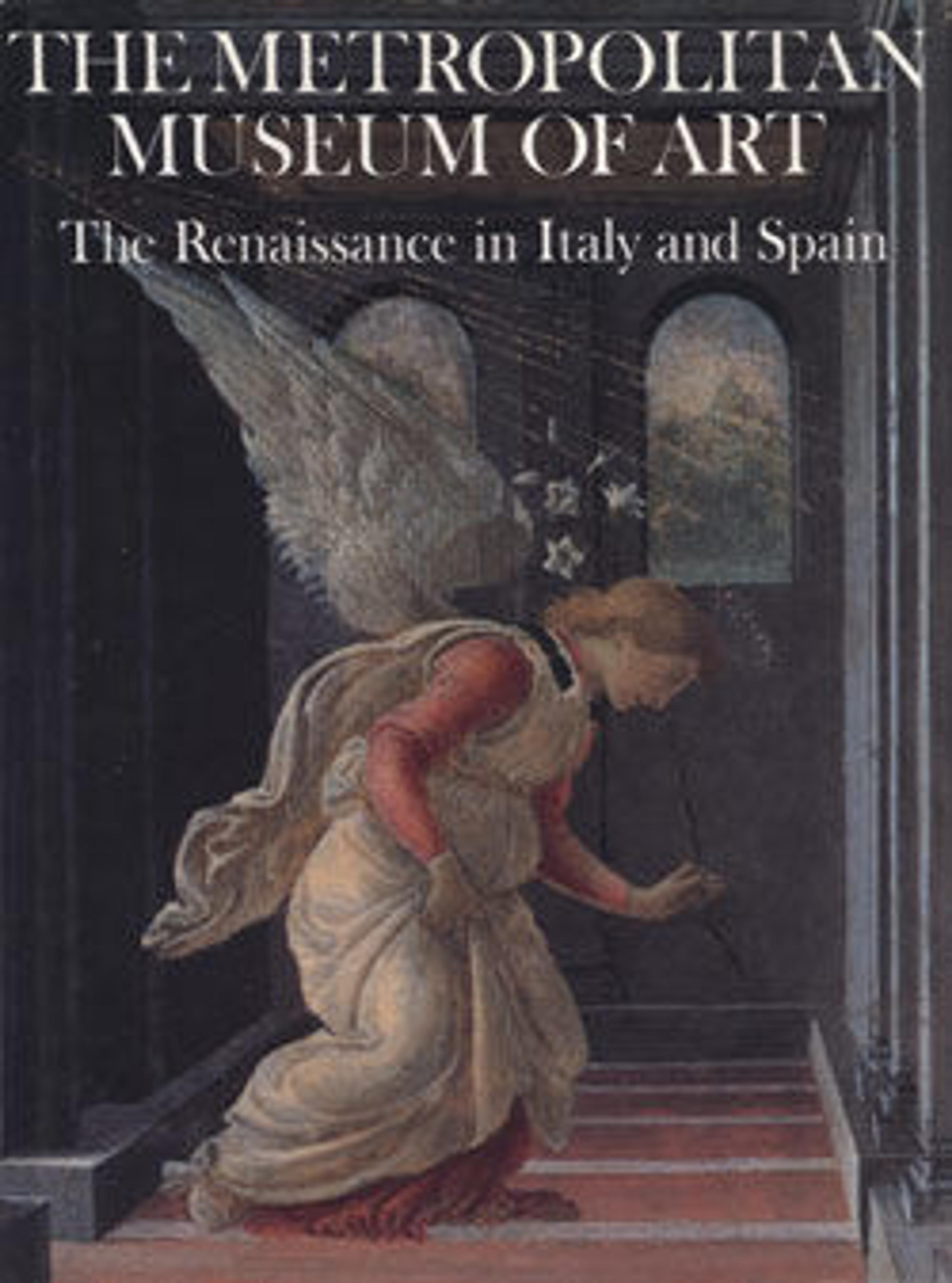Armor for Field and Tournament
This richly decorated armor is a mix of components from a large garniture for battle and tournament use. The close helmet and arm defenses are for the tilt, a joust in which a barrier separated two mounted contestants. The asymmetrical tassets (upper thigh defenses) are for the tourney, a mock combat fought by two groups of mounted contestants armed with blunted lances and swords. The breastplate, with no lance rest, and the backplate are for the tournament fought on foot or for infantry use. The shoulder defenses and the leg armor could be worn both in battle and in the tournament.
The armor’s blued steel surfaces are etched and gilt with bands of ornament, some in low relief, that includes strapwork, grotesques, allegorical figures, and gods. The winged figure at the top of the breastplate, holding a trumpet and palm branch, symbolizes Fame.
Garnitures of this complexity were among the most extensive developed by Italian armorers and remained in vogue from about 1575 to 1600. Their enormous expense and elaborate decoration made them affordable to only a limited group of noble patrons. This armor appears to have been ordered by the duke of Saxe-Weimar, and it remained in a German castle until the 1920s.
The armor’s blued steel surfaces are etched and gilt with bands of ornament, some in low relief, that includes strapwork, grotesques, allegorical figures, and gods. The winged figure at the top of the breastplate, holding a trumpet and palm branch, symbolizes Fame.
Garnitures of this complexity were among the most extensive developed by Italian armorers and remained in vogue from about 1575 to 1600. Their enormous expense and elaborate decoration made them affordable to only a limited group of noble patrons. This armor appears to have been ordered by the duke of Saxe-Weimar, and it remained in a German castle until the 1920s.
Artwork Details
- Title:Armor for Field and Tournament
- Date:ca. 1575–80
- Geography:probably Milan
- Culture:Italian, probably Milan
- Medium:Steel, gold, silver, leather, textile
- Dimensions:H. 71 1/2 in. (181.61 cm); Wt. 52 lb. 4 oz. (23.7 kg)
- Classification:Armor for Man
- Credit Line:Gift of Stephen V. Grancsay, 1942
- Object Number:42.50.27a–n
- Curatorial Department: Arms and Armor
More Artwork
Research Resources
The Met provides unparalleled resources for research and welcomes an international community of students and scholars. The Met's Open Access API is where creators and researchers can connect to the The Met collection. Open Access data and public domain images are available for unrestricted commercial and noncommercial use without permission or fee.
To request images under copyright and other restrictions, please use this Image Request form.
Feedback
We continue to research and examine historical and cultural context for objects in The Met collection. If you have comments or questions about this object record, please contact us using the form below. The Museum looks forward to receiving your comments.
